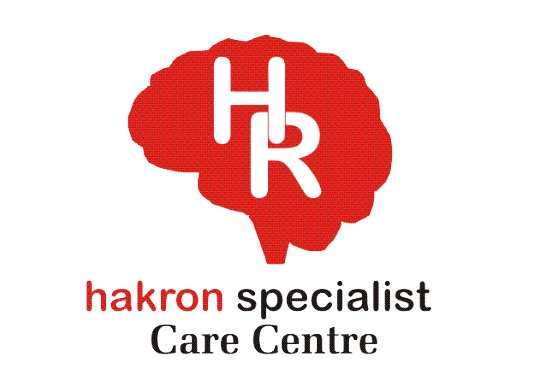Mental health Prevention: 7 Essential Ways to Promote Wellness
Why Mental health Prevention and Mental Health Promotion matter
Mental health Prevention and Mental Health Promotion must guide every clinical and community plan. Prevention reduces suffering and cost, and promotion builds conditions where people thrive. This article gives clinicians, program leaders, and policymakers clear, actionable steps. It stays clinical and relational: we state what to do, why it works, and how to measure progress.
Core principles of prevention
Prevention begins with risk and protective factor assessment. Screen populations. Map stressors. Identify groups exposed to trauma, isolation, or resource loss. Match intervention intensity to local capacity. Build relationships with community leaders, employers, and schools so programs fit real life. Prioritize culturally relevant choices over one-size-fits-all approaches. See WHO mental health prevention and promotion.
Mental Health Promotion — shifting from illness to flourishing
Promotion focuses on skills, environments, and policies that support wellbeing. Train caregivers, supervisors, and teachers to spot warning signs and respond supportively. Create public messaging that normalizes help-seeking and models practical coping strategies. Change routines that support sleep, nutrition, and social connection. When systems promote mental health, crises become less frequent and less severe.
Mental Health Prevention Strategies
#1: Prioritize Children’s Environments.
Early childhood shapes lifelong resilience. Invest in caregiver support, safe schooling, anti-bullying plans and parenting programs that teach responsive care and basic emotional coaching. When communities reduce child abuse, neglect and chronic stress, they lower lifetime incidence of depression, anxiety and behavioural disorders. Programs that strengthen early relationships pay large dividends in adult mental health.
#2: Reduce Violence & Substance Harms
Violence and harmful substance use remain potent, preventable drivers of mental illness. Frame local campaigns to reduce intimate partner and community violence, screen for exposure in antenatal and primary care, and connect people to resources. Reduce availability and social acceptance of heavy alcohol or stimulant use through education and targeted brief interventions; these actions cut risk for mood disorders, psychosis relapse and suicidal behaviour.
#3: Embed Promotion In Primary Care & Schools
Primary care and school systems see people early and often; they form ideal platforms for low-cost promotion and screening. Train clinicians and staff to deliver brief psychoeducation, resilience-building curricula and validated screening tools so teams identify at-risk students and patients before problems escalate. Reviews recommend integrating promotion and prevention into everyday services instead of treating them as optional extras. This integration supports early help-seeking and reduces downstream burden on specialist services.
#4: Adopt Transdiagnostic, Youth-focused Early Intervention
Young people often present with overlapping symptoms that do not fit clean diagnostic boxes. Use multidisciplinary, transdiagnostic approaches that target common pathways—stress regulation, social functioning and substance risk—rather than waiting for a full disorder to emerge. Evidence shows early, broad interventions can delay or prevent progression to severe illness when services identify need early and offer flexible supports.
#5: Strengthen Coping Skills & Social Connectedness
Teach practical coping—problem-solving, sleep hygiene, stress management, and help-seeking—and create spaces for peer support. Communities that normalize conversation about distress and that actively reduce stigma increase recovery and reduce isolation. Practical group programs and community psychoeducation produce small-to-moderate improvements in wellbeing and, when scaled, meaningful population-level effects.
#6: Implement routine screening and clear referral paths
Screening without referral wastes opportunity. Screen in settings people already attend, use validated brief tools, and map fast referral pathways to treatment or brief psychosocial supports. Early detection for depression, anxiety and substance misuse improves outcomes; structured systems reduce delays to care and cut the chance of crisis escalation. Embed safety plans and suicide risk protocols wherever screening occurs.
#7: Measure, adapt and scale what works
Collect simple outcome data — attendance, symptom reduction, functional improvement—and use it to refine programs. Policies that emphasize continuous improvement and local adaptation achieve better uptake than one-size-fits-all rollouts. When services track outcomes and adapt their approach, they increase both equity and impact; evidence reviews urge a cycle of testing, measurement and scale.
7 practical strategies that link prevention & promotion
Strategies below blends individual care with structural change. Hence, they can be combined together to reduce risk and amplify wellbeing.
Translating Mental Health prevention into measurable outcomes
Set clear objectives and track a small set of indicators: screening coverage, referral completion, symptom change at three months, and return-to-work rates. Use brief validated measures to keep monitoring efficient. When performance falls, investigate barriers—transport, cost, stigma—and co-design solutions with service users. Pilot small changes, measure quickly, then scale what improves outcomes.
Building sustaining partnerships
Create multidisciplinary teams that include clinicians, social workers, employers, school staff, and people with lived experience. Formalize referral agreements and feedback loops so partners know how to refer and follow up. Coach leaders to model supportive behavior and allocate modest, reliable resources—time, meeting space, and stipends for peer supporters. These investments make mental health part of everyday systems.
Improve access; reduce harm
Prioritize low-threshold services: flexible hours, brief interventions, telehealth, and means-tested payment. Train staff in trauma-informed language. Avoid coercive practices that push people away. Apply stepped-care: start with low-intensity supports and escalate when needed. This preserves specialist capacity and delivers right-sized care.
Messaging and stigma reduction that works
Craft messages that reduce blame and give clear actions. Emphasize that mental health varies over life and that most people improve with timely support. Use local messengers—faith leaders, community organizers, and people with lived experience—to deliver messages. Provide concrete guidance: how to support someone in distress, where to get immediate help, and what effective care looks like. Test messages with focus groups and refine to remove shame-triggering language.
Training and workforce development
Design training that balances clinical skill with relational practice. Teach assessment tools and how to hold safe, direct conversations. Train non-clinical staff in psychological first aid and clear referral pathways. Invest in supervision and peer consultation to prevent workforce burnout. Keep training short, focused, and tied to measurable practice changes to ensure skill uptake.
Equity, culture, and ethical practice
Make equity non-negotiable. Identify underserved groups—minority communities, low-income households, refugees—and tailor services. Use interpreters and culturally adapted materials. Co-design programs with community representatives and monitor fairness. Uphold confidentiality and informed consent at every step; trust sustains prevention work.
Financing and policy levers
Advocate for policies that fund prevention and promotion as core services. Shift part of crisis-response budgets upstream to supports that reduce crises. Present policymakers with clear return-on-investment measures: fewer readmissions, higher workplace productivity, and lower emergency use. Propose phased budgets that begin small and expand with proven results.
Monitoring, evaluation, and continuous learning
Create simple dashboards showing high-value indicators: screening coverage, referral completion, participation in promotion activities, and short-term outcomes. Pair quantitative metrics with qualitative feedback from service users. Hold regular learning sessions to adjust practice. Treat programs as living systems that need iteration, not fixed products.
Conclusion — integrate clinical action with relational practice
Mental health Prevention and Mental Health Promotion work best when clinicians act collaboratively, programs respect local context, and services remain measurable and adaptive. Start with screening, offer low-threshold interventions, strengthen community partnerships, and track outcomes. Center relational practice—build trust, clarity, and cultural fit—and you reduce harm while improving quality of life.






